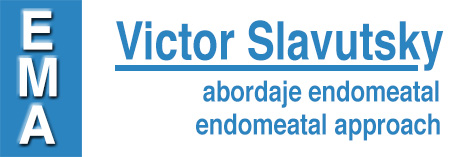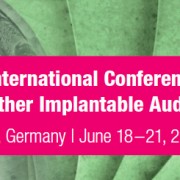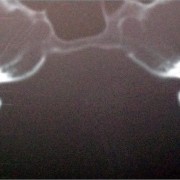13th International Conference on Cochlear Implants – Munich 2014
13th International Conference on Cochlear Implants – Munich 2014
Dr. Victor Slavutsky was invited to the «13th International Conference on Cochlear Implants».
Faculty member of «Endoscopic cochlear implantation». Conference about «Cochlear implant surgery through natural orifices».
Video-surgery session: «Endomeatal approach (EMA) partially ossified cochlea».
Endomeatal approach (EMA) partially ossified cochlea
Introduction: Cochlear ossification is a challenge for CI surgery, due to the difficulty of electrode array insertion. Surgery through anatomical natural orifices (external auditory canal and round window) avoids facial nerve (FN) and internal carotid artery (ICA) risks
Objective: The objective of this original technique: endomeatal double cochleostomy with standard electrode array is to approach in a safe manner ossified cochleas, where usual anatomical landmarks are unclear.
Material and method: Technique was developed in temporal bone Lab and then applied in 4 patients. EMA allows access to all the turns of the cochlea from base to apex. The advantage lies mainly in that the middle and inner ear access is addressed in front of the posterior wall instead of coming behind it, overcoming those limitations. This technique allows to start drilling in an endomeatal manner the basal cochlear turn from the round window until the cochlear lumen is reached, (4,5mm +/–). Second cochleostomy is performed in the middle turn, which controls the correct positioning of electrode array, during insertion, and if it is not possible a reverse insertion from middle turn cochleostomy to basal turn direction, can be attempted. The video case presented is a partial cochlear ossification, with vestibular scale fibrosis post stapedectomy and partial ossification of the scale tympani by otoespongiosis, confirmed by CT and MRI.
Results: Functional outcome of patients with partial ossification is correct, and the implant has proven its stability over time, with a higher evolutionary track than five years. No healing or extrusion problems.
Discussion: EMA is a technique of choice in cases where other approaches, due to the anatomical characteristics are not feasible and allows the CI without risk to the facial nerve, and internal carotid artery.
Learning outcome: Surgical techniques must be simplified. Cochlear implant surgery through natural anatomical orifices gives the chance to positionate de electrode array in a safer manner, although further experience is required.



